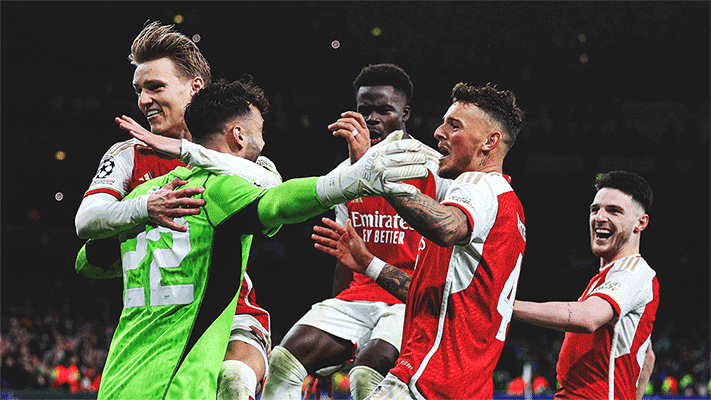The north London derby is never an ordinary game for Arsenal, and so it proved on Sunday - especially when you look at it from a tactical perspective.
Whereas the Gunners' usual gameplan is about controlling the match inside the opposition half with long spells of possession, at White Hart Lane they played much more reactively.
The major attacks were all on the break, including the move leading up to Tomas Rosicky’s superb second-minute strike. Tottenham used a particularly high defensive line, and the likes of Lukas Podolski and Alex Oxlade-Chamberlain continually scampered in behind the opposition back four throughout the first half-hour.
"Arsenal made 10 blocks, which is the most since Opta started recording this metric at the start of the 2006/07 season"
Playing so reactively meant that Arsenal completed their fewest number of passes in a league match for five years (coincidentally in this fixture in 2008/09 - summing up the fact derby matches are played in a unique manner).
It demanded excellent defensive performances from Arsenal’s two centre backs, Per Mertesacker and Laurent Koscielny. Wenger also introduced Thomas Vermaelen as an additional centre half late on, after Spurs brought on Roberto Soldado as a second striker alongside Emmanuel Adebayor.
While Arsenal made fewer passes than usual, they did something else more than ever - blocking opposition shots. Arsenal made 10 blocks, which is the most since Opta started recording this metric at the start of the 2006/07 season, the beginning of the Emirates era.
There are various methods of defending, the majority of them proactive: Arsenal’s defensive work often goes unnoticed because it’s categorised as attacking play, but offering an offensive threat pushes back opponents. Possession play, too, is a form of denying the opposition chances to get the ball forward, while Arsene Wenger's side have become particularly adept at pressing in recent seasons.
Blocking shots isn’t exactly pure football, and it’s hardly vintage Arsenal, but the defensive players proved that when crowding inside their own penalty box, they’re fully capable of putting their bodies on the line. A well-judged block can be crucial in the outcome of the game, and while Arsenal’s famous back four of the 1990s was known for their famous offside trap, they also had a real knack of throwing themselves in front of the ball to protect their own goal.
At White Hart Lane, Mertesacker and Mikel Arteta both blocked three shots, while Koscielny made two - including the goal-saving block on the line from Nacer Chadli’s shot, after Wojciech Szczesny had been beaten.

Mertesacker
Koscielny deservedly collected the man-of-the-match award. As former Arsenal centre forward Alan Smith wrote in The Daily Telegraph, it was “a magnificent demonstration of stubborn defending, of heading and kicking every single ball that came his way” - shown by the number of clearances he made.

Koscielny blocks v Tottenham
The performance was in stark contrast to Arsenal’s performance at White Hart Lane last year. In that match, both sides used very high defensive lines and the Gunners were twice ripped apart by Spurs’ pace, with both Gareth Bale and Aaron Lennon running through to score in the first half.
This game was entirely different, and while Arsenal conceded more space in front of the defence, they made sure no-one could get in behind. The constant blocking meant Szczesny was only forced into one save. “We needed a special resilience and good defensive performance,” said Wenger. “Tottenham put the effort in and had the quality to go forward but I don't feel they had a lot of clear-cut chances.”
"Arsenal’s defensive flexibility can only be a positive thing"
This poses an interesting question for Arsenal ahead of their visit to Stamford Bridge on Saturday. Chelsea have increasingly relied upon counter-attacking football this season, and in Jose Mourinho’s own words, his side ‘lack a scorer’, although Samuel Eto’o is in good form. Still, they’ve often struggled when their attacking midfielders are denied space to break into, and have been thwarted by deep defensive lines.
Is Arsenal’s defending at White Hart Lane a sign of things to come, or was it simply a consequence of taking the lead early? It remains to be seen, but Arsenal’s defensive flexibility can only be a positive thing.
Copyright 2025 The Arsenal Football Club Limited. Permission to use quotations from this article is granted subject to appropriate credit being given to www.arsenal.com as the source.











